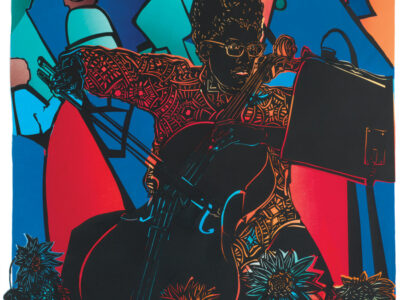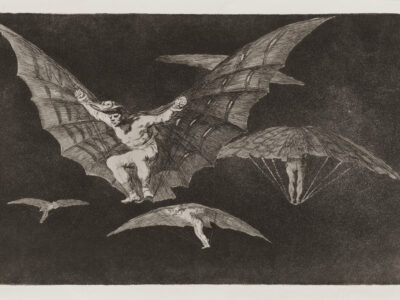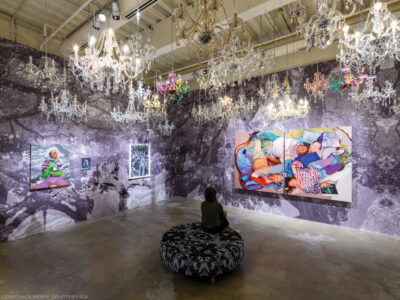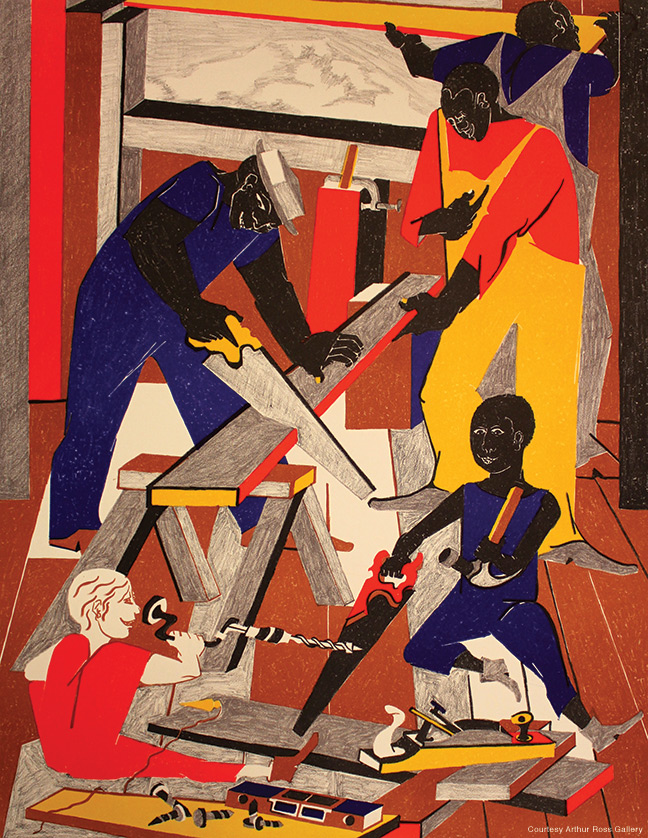
The Workshop by Jacob Lawrence.
The audience takes over at the Arthur Ross Gallery.
When she creates an exhibition, Heather Gibson Moqtaderi is used to guiding it through the full curatorial cycle, from rough concept to finished show. As both assistant director and associate curator of the Arthur Ross Gallery, it’s her job to intuit themes, select specific artworks, and even piece together audio tour scripts.
But as she began planning a new exhibition drawn from the University’s expansive art collection—something the gallery does semi-regularly—“I realized that I was more interested in hearing what our audience members would like to see on the walls,” Moqtaderi says. So she asked them.
The result was Citizen Salon, the University’s first fully crowd-sourced exhibition, which opened in December and runs through March 24.
The process kicked off last May, when Moqtaderi launched a Citizen Salon website with 125 eclectic artworks and invited “citizen curators” from the Penn community and beyond to vote for their favorites. The gallery’s own email list was supplemented with “every campus listserv we could get our hands on,” she says, and they also reached out to arts organizations and individuals from Philly to China (via the International Council of Museums listserv). Along with an image of each piece, she included some background about the artwork and its creator. Four months and a little over 600 votes later, the 50 most-selected pieces became Citizen Salon. (The title is a nod to both modern “citizen science” collaborations and the 18th-century salons of Europe.)
“I couldn’t be more excited with how the exhibition turned out as a result of the citizen curator choices,” Moqtaderi says. There was no single theme among the works voters chose, but “I was surprised—and relieved—to see the serendipitous relationships among the artwork,” she adds. “It felt natural to put these seemingly disparate works together.”
A 1972 print by Jacob Lawrence received the most votes of any piece. Created in a style that Lawrence himself dubbed “dynamic cubism,” The Workshop depicts a group of black carpenters who are working together on a building project. Citizen curators were invited to comment on why they chose the pieces they did, and Moqtaderi says that several Workshop voters mentioned the idea of “building something for the greater good and people working together,” just as they were doing with Citizen Salon.
Others said they chose The Workshop because they wanted artwork in the show that was both by an African-American artist and depicting African-American subjects. Moqtaderi noticed that thread running through many of the comments: voters told her they were specifically choosing a work by a woman, or an African American, or an artist who came from another community that is underrepresented in the art world.
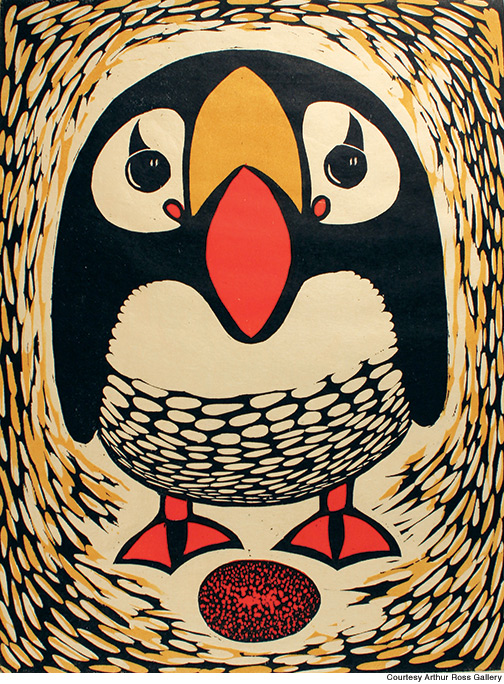
The Quintessential Puffin by Dale DeArmond.
Dale DeArmond’s The Quintessential Puffin (1983) had the second-highest number of votes, reaffirming the citizen curators’ interest in representation. DeArmond was living in Alaska when she enrolled in a correspondence course called “The Famous Artists.” She completed her art training through mail-in submissions, far outside the art world’s hot spots. Her colorful Puffin woodblock print reveals the Inuit influence on DeArmond’s work—and with its rounded body and big glossy eyes, it’s also just plain cute.
Other works are on view in Arthur Ross for the first time, including Audrey Flack’s Lady Madonna (1972). The print marks Flack’s transition from abstract expressionism to photorealism, and combines a reference to the popular Beatles song “Lady Madonna” with a representation of the Virgin Mary. “I’m always amazed by how relevant [this piece] is to topics in religion and ritual, motherhood and feminist movements, the neuroscience, psychology and physiology of emotions, as well as literary studies and theory,” one citizen curator notes in the audio tour.
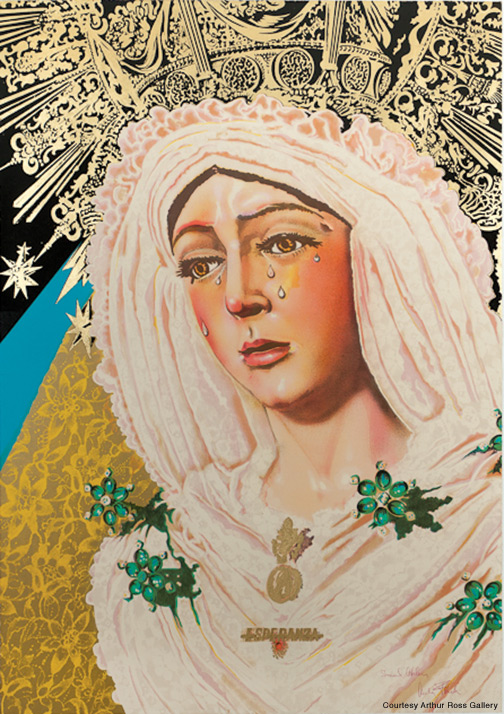
Lady Madonna by Audrey Flack.
After studying the 50 most-selected artworks, Moqtaderi eventually sorted them into six broad categories: Place, Body, Spirit, People, Sky, and Birds and Beasts. To hang so many pieces in the modestly sized gallery, she drew on the “salon style” of double- and even triple-hanging certain groups of work.
Moqtaderi’s citizen curators wrote much of the show’s wall labels—their online comments are woven throughout the text—and many of their voices appear on the audio tour.
“One of my takeaways is that our audience members are interested in visiting exhibitions to learn something and also for inspiration within their artistic community,” Moqtaderi says. “So I thought people would be interested in hearing the comments of their fellow citizen curators.”
While she hasn’t ruled out another crowd-sourced show, Moqtaderi says there isn’t one on the calendar at this point. She will, however, write up the exhibition as a study to help other museums that want to give citizen curation a try. “There really isn’t a defined precedent or best practice,” she says.
“Crowdsourcing is certainly not for every exhibition,” Moqtaderi adds. “But it was incredibly gratifying for me to listen to what members of the public were attracted to within certain artworks and think through how we might use that information to shape our exhibition schedules in the future.”
—Molly Petrilla C’06


